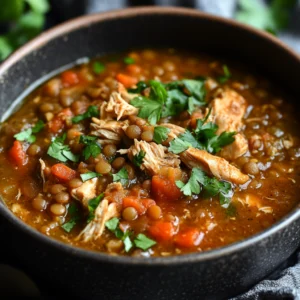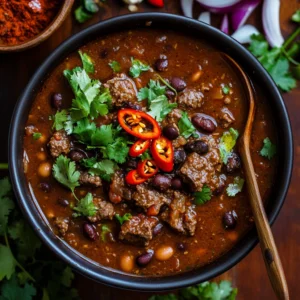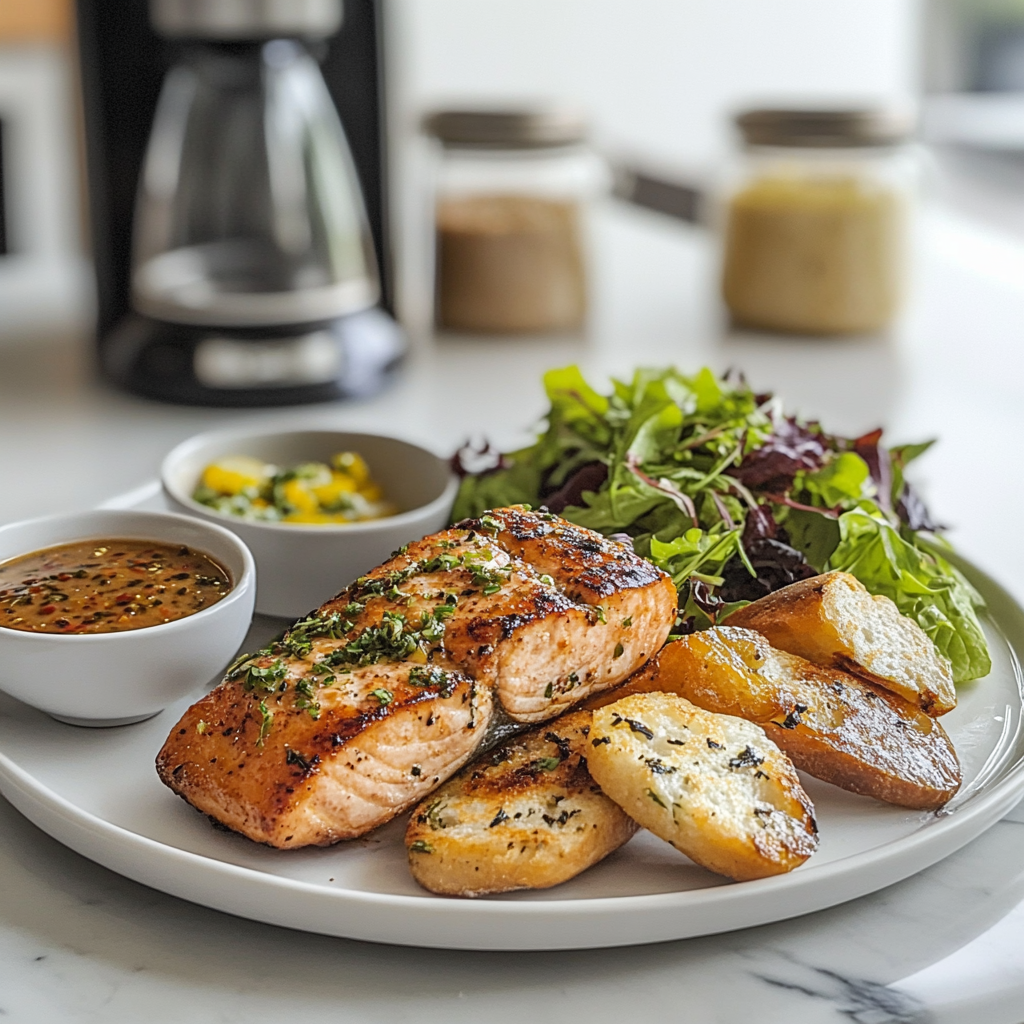A diet high in protein meals is fundamental for muscle growth, satiety, and overall well-being. Protein is an essential macronutrient that serves as the building block of muscles, bones, skin, and other tissues. It also plays a crucial role in the production of enzymes and hormones that regulate various bodily functions.
Whether you’re an athlete striving for enhanced performance, a busy professional managing a hectic schedule, or someone looking to improve overall health, maintaining a high-protein diet with protein meals can be highly beneficial.
However, one of the biggest challenges people face is finding the time to prepare nutritious meals that meet their protein requirements. This is where an Instant Pot becomes a game-changer. Unlike traditional cooking methods that can be time-consuming and require constant supervision, the Instant Pot allows you to prepare protein-rich meals quickly and effortlessly, making it a time-saving, efficient solution for anyone looking to maintain a healthy diet.
Additionally, cooking protein in an Instant Pot helps retain more nutrients and moisture, ensuring your protein meals are not only high in protein but also flavorful and nutritious.
The Science Behind Protein Meals
Proteins are macronutrients composed of long chains of amino acids, which are necessary for several biological functions in the body. They are categorized into essential amino acids, which must be obtained through dietary sources, and non-essential amino acids, which the body can synthesize on its own. Proteins are vital for the structure and function of cells, enzymes, and hormones.
They contribute to the repair and rebuilding of tissues, particularly following intense exercise or injury, playing a critical role in muscle recovery and growth. Additionally, proteins form antibodies that strengthen the immune system, making them essential for overall health and disease prevention.
Beyond these functions, proteins also regulate metabolic processes by acting as precursors for enzymes and hormones that control numerous physiological activities.
Consuming adequate protein is essential for maintaining overall health and supporting bodily functions. The Recommended Dietary Allowance (RDA) for protein varies depending on multiple factors such as age, sex, body weight, and level of physical activity. For sedentary individuals, the RDA is 0.8 grams per kilogram of body weight, which is sufficient for basic maintenance.
However, for athletes, bodybuilders, or individuals seeking muscle growth and enhanced recovery, protein needs significantly increase, ranging between 1.2 to 2.0 grams per kilogram of body weight. Those engaged in endurance sports, weightlifting, or intense physical labor may require even higher amounts to facilitate continuous muscle synthesis and prevent muscle degradation.
It is important to distribute protein intake evenly throughout the day to maximize absorption and muscle protein synthesis. Additionally, combining protein with essential micronutrients such as vitamins and minerals ensures that the body efficiently utilizes it for optimal performance and recovery.
The Importance of Protein Timing and Sources
Beyond total intake, when and how you consume protein matters significantly for overall health and performance. Studies have shown that distributing protein intake evenly throughout the day leads to greater muscle protein synthesis (MPS) compared to consuming most protein in just one or two meals. MPS is the biological process by which the body builds new muscle proteins, and it is most effectively stimulated when protein is consumed at regular intervals.
Research suggests that consuming 20-30 grams of high-quality protein per meal is optimal for maintaining muscle mass and supporting tissue repair. For individuals engaged in strength training or endurance activities, it may be beneficial to consume protein immediately post-exercise to enhance recovery and muscle rebuilding.
Furthermore, choosing high-quality protein sources (so high protein meals) is critical for ensuring that the body receives all the necessary amino acids required for muscle function and metabolic health. Animal proteins, such as meat, poultry, fish, eggs, and dairy, are considered complete proteins because they contain all essential amino acids in the right proportions.
Plant-based proteins, including beans, lentils, tofu, quinoa, and chickpeas, may be lower in one or more essential amino acids, but consuming a combination of plant-based proteins throughout the day can ensure a well-balanced amino acid profile.
Including a diverse range of protein sources in your diet enhances nutrient intake, supports muscle maintenance, and contributes to overall metabolic function, making it an essential strategy for long-term health and fitness.
Why the Instant Pot is a Game-Changer for High-Protein Diets

With fast-paced lifestyles, finding time to cook nutritious meals is often difficult. This is where Instant Pot cooking becomes invaluable. It allows for quick and even cooking, cutting cooking time significantly for proteins like chicken, beef, and legumes, making it ideal for meals prepping.
Unlike traditional boiling and frying, which can lead to nutrient loss, pressure cooking preserves vitamins and minerals. Additionally, once the Instant Pot is set, it requires no stirring or monitoring, freeing up time for other tasks and making meals preparation much more convenient.
For a deeper dive into why protein matters, check out this Harvard article on the importance of protein in a balanced diet.
Top Protein-Rich Ingredients for Instant Pot Cooking

Lean meats such as chicken breast, turkey, lean beef, and pork tenderloin are ideal for those looking to build muscle while maintaining a low-fat intake. These protein sources are easy to prepare and absorb flavors well in an Instant Pot. Seafood, including salmon, tuna, shrimp, and cod, provides high-quality protein along with essential omega-3 fatty acids, which promote heart and brain health.
For those following a plant-based diet, lentils, chickpeas, black beans, and quinoa are excellent sources of protein, fiber, and iron. Incorporating a mix of these protein-rich ingredients into your diet ensures a well-rounded nutritional profile.
Essential Tips for Cooking Protein Meals in the Instant Pot
Proper preparation is essential when cooking protein in an Instant Pot to achieve the best texture, flavor, and nutritional retention. Marinating meats for at least 30 minutes, or even overnight, enhances their tenderness and allows the flavors to penetrate deeply. Dry rubs and liquid marinades can both be effective, depending on the desired flavor profile.
Cutting proteins into uniform sizes ensures even cooking and prevents some pieces from overcooking while others remain underdone. It is also beneficial to let meats reach room temperature before cooking, as this helps them cook more evenly and retain moisture.
Cooking times vary significantly based on the type of protein being used. Chicken breast requires 8-10 minutes on high pressure, while ground beef typically takes 10-12 minutes to fully cook. Salmon fillets cook much faster, in just 3-5 minutes, making them a great choice for a quick meal.
Lentils take between 10-15 minutes, depending on the variety, with red lentils cooking faster than green or black lentils. Using the Instant Pot’s sauté function before pressure cooking can also help enhance the depth of flavor, especially for meats and aromatic vegetables.
To avoid the dreaded “Burn” message, it is crucial to always add at least 1 cup of liquid, such as broth, water, or coconut milk, to provide the necessary moisture for pressure cooking. Thick sauces should be added after pressure cooking to prevent scorching at the bottom of the pot.
Deglazing the pot after sautéing meats by scraping up any browned bits with a wooden spoon ensures even heat distribution and prevents unwanted burning. By following these careful preparation techniques, you can achieve consistently high-quality, flavorful, and nutritious protein-rich meals in your Instant Pot.
Easy High-Protein Instant Pot Recipes

Instant Pot Chicken & Lentil Stew
Equipment
- Instant Pot
Ingredients
- 2 chicken breasts diced
- 1 cup lentils
- 2 carrots chopped
- 1 onion diced
- 2 cups chicken broth
Instructions
- Sauté onions & garlic in the Instant Pot.
- Add chicken, lentils, and broth.
- Pressure cook for 12 minutes.
Notes
Instant Pot Beef & Black Bean Chili

A hearty, protein-rich chili that’s ready in under 30 minutes! Combining lean beef with black beans creates a flavorful, nutrient-packed dish that supports muscle growth and energy levels.
Ingredients:
- 1 lb lean ground beef
- 1 can black beans
- 1 can diced tomatoes
- 1 onion, diced
- 1 tbsp chili powder
Instructions:
- Sauté ground beef with onions.
- Add beans, tomatoes, and spices.
- Pressure cook for 15 minutes.
Want to keep your knives sharp for meal prep? Read this guide on knife sharpening.
Final Thoughts
Cooking protein-rich meals in an Instant Pot is the easiest and most efficient way to prepare nutritious, flavorful food while saving time in the kitchen. The Instant Pot’s versatility allows you to cook a variety of protein sources, from lean meats and seafood to plant-based alternatives, in record time.
Unlike traditional stovetop cooking methods, the Instant Pot uses high-pressure steam to seal in moisture and nutrients, ensuring that your protein meals retain their full nutritional value while remaining tender and delicious.
One of the greatest advantages of using an Instant Pot is that it enables one-pot cooking, reducing the number of dishes to clean and simplifying meal preparation. Whether you’re preparing meaty stews, hearty vegetarian lentil dishes, or quick seafood meals, the Instant Pot provides consistent and reliable results while making it easier to maintain a high-protein diet.
Additionally, this method of cooking allows for batch meal preparation, making it ideal for individuals and families looking to plan their meals in advance for the week.
For more kitchen tips, including ways to enhance your food preparation skills, check out how to sharpen a knife and make your meal prep even easier!

